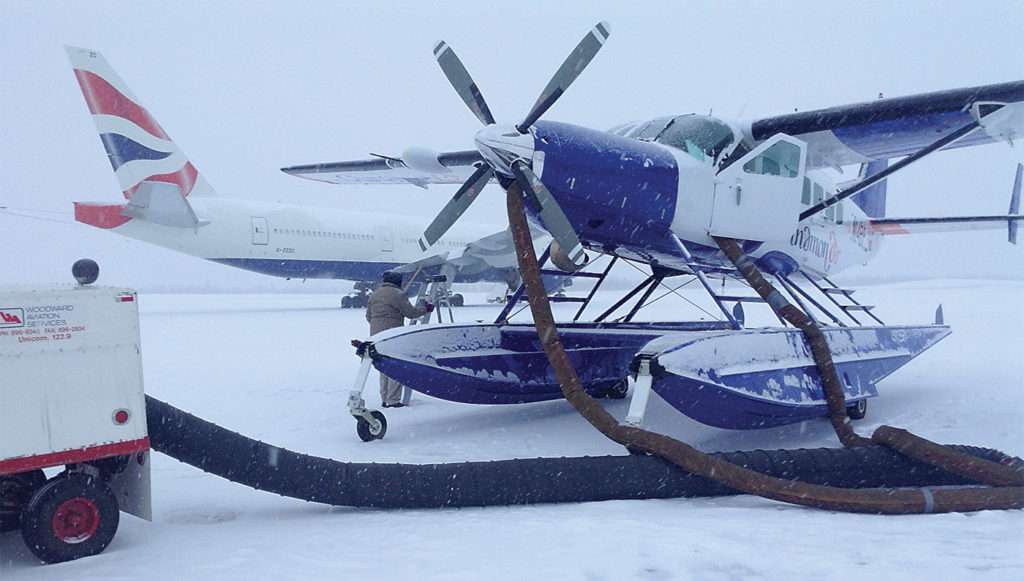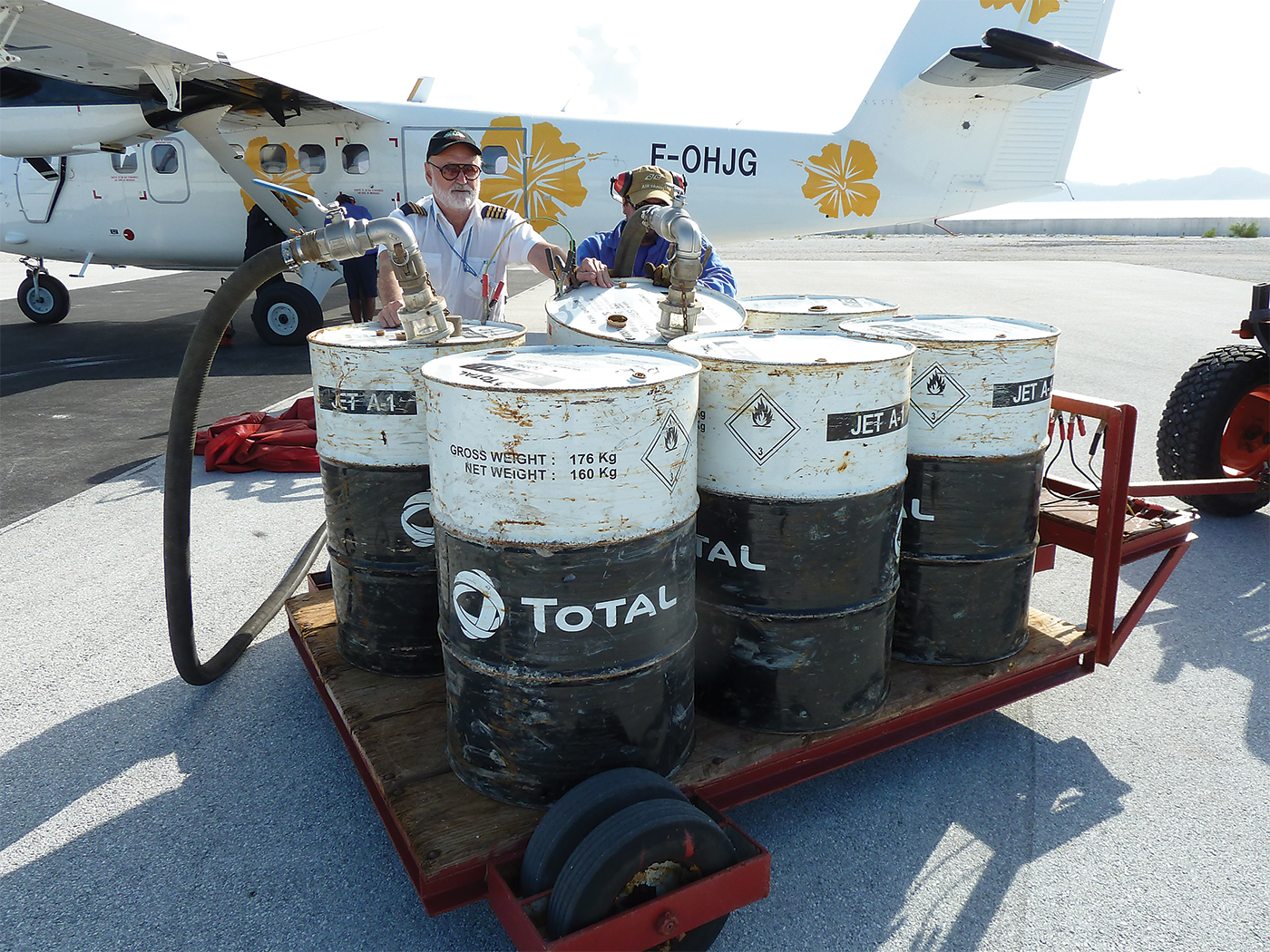Estimated reading time 10 minutes, 18 seconds.
It would be fair to say that Bob Ambrose could be called “Mr. Twin Otter.”

But first, a bit of history.
Almost immediately after de Havilland Canada flew its new DHC-6 twin turboprop for the first time in May 1965, it was clear the company had a winner on its hands. The DHC-6 Twin Otter was an upmarket move from the sturdy and still capable 1950s-vintage DHC-3 single-engine Otter, itself an evolution of the slightly older DHC-2 Beaver.
The ensuing 55 years have proven the wisdom of its design. Hundreds of legacy Twin Otters are still flying around the world, and the type has been given a new lease on life by Victoria, B.C.-based Viking Air Ltd., which recently celebrated the 10th anniversary of the first flight of its next-generation Series 400 Twin Otter.
Viking launched the Series 400 program in 2007 after acquiring type certificates for the entire de Havilland Canada line, from the venerable DHC-1 Chipmunk trainer to the DHC-7, better known as the Dash 7 commuter platform.
While the Series 400 continues to sell into the global market, there’s no shortage of demand for the heritage versions. It’s a market Ambrose knows well, having logged more than 10,000 hours in Twin Otters out of a career total of 28,000 hours. As an airline transport-rated pilot and president of Planes & Parts Ltd., based in Strathmore, Alta., his relationship with Twin Otters began not too long after de Havilland’s maiden flight.
“I flew No. 2 for about 1,500 hours.”
Having earned his private pilot licence through Air Cadets in 1963 at the Calgary Flying Club, Ambrose was hired by the now-defunct Great Northern Airways (GNA) in 1966, spending most of that Yukon winter as a “swamper” on a Douglas DC-3. A commercial licence and float endorsement saw him flying forestry patrol out of Whitehorse in a Piper PA-18 Super Cub.

Twin-engine and instrument ratings led Ambrose to the cockpits of Cessna 180 Skywagons, Beavers and Piper PA-23 Apaches for Airwest out of Vancouver, before GNA hired him back to the North again.
“I jumped at it,” he told Skies in an interview from Puerto Vallarta, Mexico, where he now spends most of his winters while still managing Planes & Parts remotely. “Coast flying was not for a boy from the Prairies!”
By early 1969, he had progressed from the Beaver to the Otter and then had his first flight in a Twin Otter that May. “Within days, I was on my way to the Arctic Islands and was turned loose on arrival.”
Nowadays, Planes & Parts – found online at www.worldwideferry.com – specializes in global delivery of Twin Otters, including the new Vikings, as well as Beech turboprops. Ambrose’s high-hour contract pilots also have extensive experience in piston-engine twins as well as single-engine Pilatus PC-6 Porter and Cessna 208 Caravan turboprops.
Ambrose said he set up the company – which has roots going back to 1986 – when he purchased it around 1993. He had just finished a stint as chief pilot with Calgary-based Kenn Borek Air, where his work included ferry flights to the Maldives, an increasingly popular tourist destination in the Indian Ocean. Those were pre-Internet days and the flights involved a lot of paperwork and fax messages. “You’d send somebody off and rely on them to phone in once a while about their location. Now, everybody wants to know every half hour.”
That experience sowed the seeds for Planes & Parts, where Twin Otters represent 80 to 90 per cent of its business. The company’s website indicates that all deliveries are done at “reasonable cost.” Asked how that’s determined, because there are surely extras that arise during a delivery, Ambrose said “everything is up front” so there are no issues. “We provide an all-in price that covers everything except aircraft breakdown, which is then at the expense of the customer.”
The company’s trusted reputation is due in no small measure to the crews Ambrose recruits. Dev Salkeld is a typical example. He was the former chief pilot and operations manager for Coulson Flying Tankers, where he also captained its Lockheed Martin C-130 Hercules and Martin Mars waterbombers.

Logging more than 27,000 hours – including “Twin Otter time from way back when,” as Ambrose put it – Salkeld evidently could fly just about anything, including his vintage Stinson 10 Voyager and Chinese Nanchang CJ-6 as well as various Boeing and Airbus models, to name just a few.
Last November, Salkeld was involved in delivering two new Viking Series 400s for Calgary-based Avmax Group Inc. to Chad in north-central Africa. Ambrose suggested Salkeld would be a good source of DHC-6 anecdotes but, sadly, the 67-year-old Saskatchewan native died later that very day after a brief fight with cancer. He was “a really good guy,” said Ambrose.
Asked what characteristics suit pilots for ferry work, Ambrose said they tend to be “looking for adventure” and he generally has no trouble finding people he trusts. Retirees are his preferred option.
“Sometimes a customer will tell us to be ready on a certain day and then we’ll find out it’s not going to be ready then, so I’m supposed to adapt to that. I do have some airline guys who may have some down time and they’ll call me. If they book the time off and then it doesn’t happen on the specified date, they can’t go.”
In one case he recounted, a start-up carrier in the Maldives was taking delivery of seven aircraft purchased from several Canadian companies. But the new airline had difficulty getting its operating certificate.
“The Maldives wouldn’t even let them bring in the airplanes,” which had all been painted in their new livery. In the end, Ambrose managed to pull it all together and complete the deliveries.
“It just comes in lumps, so there was no use trying to have a crew available,” he said. “I’ve pretty well always been able to come up with guys.” Having his own full-time crews isn’t practicable, given the sometimes cyclical nature of the business. There was “a real lull” last year when, beginning in March and except for some small jobs, “we didn’t put [ferry] tanks in an aircraft until September.”

A Twin Otter with full ferry tanks containing an additional 1,000 U.S. gallons can fly for 18 hours. Ambrose recalled flying some 2,100 nautical miles with a co-pilot to Lima, Peru, from Easter Island in the remote Eastern Pacific. Another time, he and a flight engineer flew to St. Maarten in the Caribbean from Cape Verde, some 2,300 nautical miles away off the coast of West Africa.
He admitted ruefully that while he did have a couple of minor “crashes” years ago, including a gear-up landing in a de Havilland DHC-4 Caribou, “I never put a ding in a Twin Otter and never hurt anybody.” And although he has never had any “real personal emergencies,” he recalled being five hours out of Hawaii in a DHC-6 on the way to the Marshall Islands in the South Pacific when a fuel control issue necessitated a return to Honolulu.
One of his more challenging personal deliveries involved getting a DHC-6 owned by North Cariboo Air in B.C. from Minnesota to Peru, where it would support oil exploration work. It was a “straight floats” aircraft (i.e. no wheels), but despite misgivings about not being able to land on a runway, Ambrose agreed to do it in roughly six-hour legs via Louisiana, Belize and Panama.
The first two legs went smoothly but the base in Belize had no jet fuel, only diesel, which Ambrose knew from his Arctic experience burned just fine in a Pratt & Whitney Canada turbine.
But on approach to Panama, air traffic control cleared them into the port city of Balboa. There, the local marine police accused them of landing in a prohibited area – the canal shipping lane – even though there wasn’t a ship in sight.
The next morning, Ambrose was told not only that he had come very close to going to jail for landing there, but also that he should not be fuelling up from drums ferried out by boat. That was eventually resolved and after further “negotiations” with the port authority, he took off for Iquitos, crossing the Andes near Cali, Colombia.
“Other than the little problem in Panama, this trip turned out to be a lot easier than I was expecting,” Ambrose wrote in a log he shared with Skies. “Don’t know if I will ever get clearance to land in Panama again though.”

Two days later he was off to Kenya, one of countless deliveries that has kept Planes & Parts in business.
One of Ambrose’s many fans is Andy Cook, business development manager at Rocky Mountain Aircraft (RMA), based at Calgary Springbank Airport. Founded in 1982, family-owned RMA has between 20 and 25 of its Twin Otters leased out at any given time for operations ranging from the tropics to the Arctic.
“A long time ago, we would try to do or organize ferries ourselves,” Cook told Skies, explaining that this would often involve the use of RMA’s own ferry tanks. “Then we had a problem – either they wound up in the wrong place or we were unable to get them back. That became quite expensive.”
He also recalled “nightmare trips” with pilots who were essentially strangers. “We had some interesting phone calls at three o’clock in the morning . . . This is one of the advantages of dealing with Bob; his pilots keep us up to date with what’s going on and if there are particular difficulties, they’ll ask for help. But they tend to be very self-sufficient about what they do.”
A recent ferry involved a low-time Twin Otter being returned from Nigeria via Algeria, Majorca, Wales, Iceland and Iqaluit. A critical bleed-air heat mixing valve malfunctioned, likely due to the fact that the aircraft had been idle for some time, and Cook’s personal contacts couldn’t supply a replacement.
Ambrose had a contact in Switzerland who did have one, but before it could be shipped, “Bob’s guy figured out a fix and so we did not get held up. Having pilots who can think on the run is really helpful and that’s what Bob specializes in.”
So, are Ambrose and his pilots RMA’s “go-to” guys?
“I think you’ll find that they’re most people’s go-to guys,” replied Cook. “When we’re dealing with new customers, we’ll always recommend them.”


Interesting story. I flew with Bob out of Fort Nelson in the mid 80s out to rig camps and remote locations.
Lots of good times